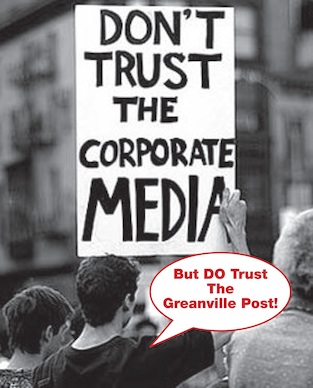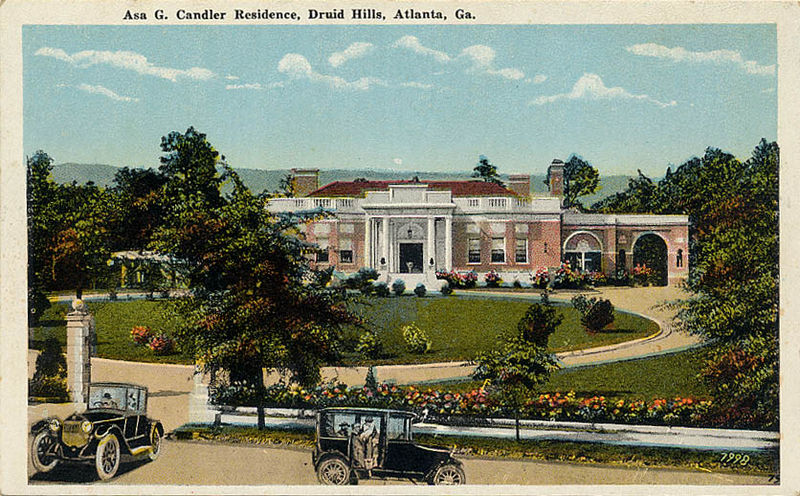World news
Why Marxism is on the rise again

Capitalism is in crisis across the globe – but what on earth is the alternative? Well, what about the musings of a certain 19th-century German philosopher? Yes, Karl Marx is going mainstream – and goodness knows where it will end…”
By Stuart Jeffries, Guardian (UK)
Facebook Guardian
Class conflict once seemed so straightforward. Marx and Engels wrote in the second best-selling book of all time, The Communist Manifesto: “What the bourgeoisie therefore produces, above all, are its own grave-diggers. Its fall and the victory of the proletariat are equally inevitable.” (The best-selling book of all time, incidentally, is the Bible – it only feels like it’s 50 Shades of Grey.)
Today, 164 years after Marx and Engels wrote about grave-diggers, the truth is almost the exact opposite. The proletariat, far from burying capitalism, are keeping it on life support. Overworked, underpaid workers ostensibly liberated by the largest socialist revolution in history (China’s) are driven to the brink of suicide to keep those in the west playing with their iPads. Chinese money bankrolls an otherwise bankrupt America.
The irony is scarcely wasted on leading Marxist thinkers. “The domination of capitalism globally depends today on the existence of a Chinese Communist party that gives de-localised capitalist enterprises cheap labour to lower prices and deprive workers of the rights of self-organisation,” says Jacques Rancière, the French marxist thinker and Professor of Philosophy at the University of Paris VIII. “Happily, it is possible to hope for a world less absurd and more just than today’s.”
That hope, perhaps, explains another improbable truth of our economically catastrophic times – the revival in interest in Marx and Marxist thought. Sales of Das Kapital, Marx’s masterpiece of political economy, have soared ever since 2008, as have those of The Communist Manifesto and the Grundrisse (or, to give it its English title, Outlines of the Critique of Political Economy). Their sales rose as British workers bailed out the banks to keep the degraded system going and the snouts of the rich firmly in their troughs while the rest of us struggle in debt, job insecurity or worse. There’s even a Chinese theatre director called He Nian who capitalised on Das Kapital’s renaissance to create an all-singing, all-dancing musical.
And in perhaps the most lovely reversal of the luxuriantly bearded revolutionary theorist’s fortunes, Karl Marx was recently chosen from a list of 10 contenders to appear on a new issue of MasterCard by customers of German bank Sparkasse in Chemnitz. In communist East Germany from 1953 to 1990, Chemnitz was known as Karl Marx Stadt. Clearly, more than two decades after the fall of the Berlin Wall, the former East Germany hasn’t airbrushed its Marxist past. In 2008, Reuters reports, a survey of east Germans found 52% believed the free-market economy was “unsuitable” and 43% said they wanted socialism back. Karl Marx may be dead and buried in Highgate cemetery, but he’s alive and well among credit-hungry Germans. Would Marx have appreciated the irony of his image being deployed on a card to get Germans deeper in debt? You’d think.
Later this week in London, several thousand people will attend Marxism 2012, a five-day festival organised by the Socialist Workers’ Party. It’s an annual event, but what strikes organiser Joseph Choonara is how, in recent years, many more of its attendees are young. “The revival of interest in Marxism, especially for young people comes because it provides tools for analysing capitalism, and especially capitalist crises such as the one we’re in now,” Choonara says.
There has been a glut of books trumpeting Marxism’s relevance. English literature professor Terry Eagleton last year published a book called Why Marx Was Right. French Maoist philosopher Alain Badiou published a little red book called The Communist Hypothesis with a red star on the cover (very Mao, very now) in which he rallied the faithful to usher in the third era of the communist idea (the previous two having gone from the establishment of the French Republic in 1792 to the massacre of the Paris communards in 1871, and from 1917 to the collapse of Mao’s Cultural Revolution in 1976). Isn’t this all a delusion?
Aren’t Marx’s venerable ideas as useful to us as the hand loom would be to shoring up Apple’s reputation for innovation? Isn’t the dream of socialist revolution and communist society an irrelevance in 2012? After all, I suggest to Rancière, the bourgeoisie has failed to produce its own gravediggers. Rancière refuses to be downbeat: “The bourgeoisie has learned to make the exploited pay for its crisis and to use them to disarm its adversaries. But we must not reverse the idea of historical necessity and conclude that the current situation is eternal. The gravediggers are still here, in the form of workers in precarious conditions like the over-exploited workers of factories in the far east. And today’s popular movements – Greece or elsewhere – also indicate that there’s a new will not to let our governments and our bankers inflict their crisis on the people.”
That, at least, is the perspective of a seventysomething Marxist professor. What about younger people of a Marxist temper? I ask Jaswinder Blackwell-Pal, a 22 year-old English and drama student at Goldsmiths College, London, who has just finished her BA course in English and Drama, why she considers Marxist thought still relevant. “The point is that younger people weren’t around when Thatcher was in power or when Marxism was associated with the Soviet Union,” she says. “We tend to see it more as a way of understanding what we’re going through now. Think of what’s happening in Egypt. When Mubarak fell it was so inspiring. It broke so many stereotypes – democracy wasn’t supposed to be something that people would fight for in the Muslim world. It vindicates revolution as a process, not as an event. So there was a revolution in Egypt, and a counter-revolution and a counter-counter revolution. What we learned from it was the importance of organisation.”
This, surely is the key to understanding Marxism’s renaissance in the west: for younger people, it is untainted by association with Stalinist gulags. For younger people too, Francis Fukuyama’s triumphalism in his 1992 book The End of History – in which capitalism seemed incontrovertible, its overthrow impossible to imagine – exercises less of a choke-hold on their imaginations than it does on those of their elders.
Blackwell-Pal will be speaking Thursday on Che Guevara and the Cuban revolution at the Marxism festival. “It’s going to be the first time I’ll have spoken on Marxism,” she says nervously. But what’s the point thinking about Guevara and Castro in this day and age? Surely violent socialist revolution is irrelevant to workers’ struggles today? “Not at all!” she replies. “What’s happening in Britain is quite interesting. We have a very, very weak government mired in in-fighting. I think if we can really organise we can oust them.” Could Britain have its Tahrir Square, its equivalent to Castro’s 26th of July Movement? Let a young woman dream. After last year’s riots and today with most of Britain alienated from the rich men in its government’s cabinet, only a fool would rule it out.
For a different perspective I catch up with Owen Jones, 27-year-old poster boy of the new left and author of the bestselling politics book of 2011, Chavs: the Demonisation of the Working Class. He’s on the train to Brighton to address the Unite conference. “There isn’t going to be a bloody revolution in Britain, but there is hope for a society by working people and for working people,” he counsels.
Indeed, he says, in the 1860s the later Marx imagined such a post-capitalist society as being won by means other than violent revolution. “He did look at expanding the suffrage and other peaceful means of achieving socialist society. Today not even the Trotskyist left call for armed revolution. The radical left would say that the break with capitalism could only be achieved by democracy and organisation of working people to establish and hold on to that just society against forces that would destroy it.”
Jones recalls that his father, a Militant supporter in the 1970s, held to the entryist idea of ensuring the election of a Labour government and then organising working people to make sure that government delivered. “I think that’s the model,” he says. How very un-New Labour. That said, after we talk, Jones texts me to make it clear he’s not a Militant supporter or Trotskyist. Rather, he wants a Labour government in power that will pursue a radical political programme. He has in mind the words of Labour’s February 1974 election manifesto which expressed the intention to “Bring about a fundamental and irreversible shift in the balance of power and wealth in favour of working people and their families”. Let a young man dream.
What’s striking about Jones’s literary success is that it’s premised on the revival of interest in class politics, that foundation stone of Marx and Engels’s analysis of industrial society. “If I had written it four years earlier it would have been dismissed as a 1960s concept of class,” says Jones. “But class is back in our reality because the economic crisis affects people in different ways and because the Coalition mantra that ‘We’re all in this together’ is offensive and ludicrous. It’s impossible to argue now as was argued in the 1990s that we’re all middle class. This government’s reforms are class-based. VAT rises affect working people disproportionately, for instance.
“It’s an open class war,” he says. “Working-class people are going to be worse off in 2016 than they were at the start of the century. But you’re accused of being a class warrior if you stand up for 30% of the population who suffers this way.”
This chimes with something Rancière told me. The professor argued that “one thing about Marxist thought that remains solid is class struggle. The disappearance of our factories, that’s to say de-industrialisation of our countries and the outsourcing of industrial work to the countries where labour is less expensive and more docile, what else is this other than an act in the class struggle by the ruling bourgeoisie?”
There’s another reason why Marxism has something to teach us as we struggle through economic depression, other than its analysis of class struggle. It is in its analysis of economic crisis. In his formidable new tome Less Than Nothing: Hegel and the Shadow of Dialectical Materialism, Slavoj Žižek tries to apply Marxist thought on economic crises to what we’re enduring right now. Žižek considers the fundamental class antagonism to be between “use value” and “exchange value”.
What’s the difference between the two? Each commodity has a use value, he explains, measured by its usefulness in satisfying needs and wants. The exchange value of a commodity, by contrast, is traditionally measured by the amount of labour that goes into making it. Under current capitalism, Žižek argues, exchange value becomes autonomous. “It is transformed into a spectre of self-propelling capital which uses the productive capacities and needs of actual people only as its temporary disposable embodiment. Marx derived his notion of economic crisis from this very gap: a crisis occurs when reality catches up with the illusory self-generating mirage of money begetting more money – this speculative madness cannot go on indefinitely, it has to explode in even more serious crises. The ultimate root of the crisis for Marx is the gap between use and exchange value: the logic of exchange-value follows its own path, its own made dance, irrespective of the real needs of real people.”
In such uneasy times, who better to read than the greatest catastrophist theoriser of human history, Karl Marx? And yet the renaissance of interest in Marxism has been pigeonholed as an apologia for Stalinist totalitarianism. In a recent blog on “the new communism” for the journal World Affairs, Alan Johnson, professor of democratic theory and practice at Edge Hill University in Lancashire, wrote: “A worldview recently the source of immense suffering and misery, and responsible for more deaths than fascism and Nazism, is mounting a comeback; a new form of leftwing totalitarianism that enjoys intellectual celebrity but aspires to political power.
“The New Communism matters not because of its intellectual merits but because it may yet influence layers of young Europeans in the context of an exhausted social democracy, austerity and a self-loathing intellectual culture,” wrote Johnson. “Tempting as it is, we can’t afford to just shake our heads and pass on by.”
That’s the fear: that these nasty old left farts such as Žižek, Badiou, Rancière and Eagleton will corrupt the minds of innocent youth. But does reading Marx and Engels’s critique of capitalism mean that you thereby take on a worldview responsible for more deaths than the Nazis? Surely there is no straight line from The Communist Manifesto to the gulags, and no reason why young lefties need uncritically to adopt Badiou at his most chilling. In his introduction to a new edition of The Communist Manifesto, Professor Eric Hobsbawm suggests that Marx was right to argue that the “contradictions of a market system based on no other nexus between man and man than naked self-interest, than callous ‘cash payment’, a system of exploitation and of ‘endless accumulation’ can never be overcome: that at some point in a series of transformations and restructurings the development of this essentially destabilising system will lead to a state of affairs that can no longer be described as capitalism”.
That is post-capitalist society as dreamed of by Marxists. But what would it be like? “It is extremely unlikely that such a ‘post-capitalist society’ would respond to the traditional models of socialism and still less to the ‘really existing’ socialisms of the Soviet era,” argues Hobsbawm, adding that it will, however, necessarily involve a shift from private appropriation to social management on a global scale. “What forms it might take and how far it would embody the humanist values of Marx’s and Engels’s communism, would depend on the political action through which this change came about.”
This is surely Marxism at its most liberating, suggesting that our futures depend on us and our readiness for struggle. Or as Marx and Engels put it at the end of The Communist Manifesto: “Let the ruling classes tremble at a communist revolution. The proletarians have nothing to lose but their chains. They have a world to win.”
Marxism 2012, University College and Friends Meeting House London, 5-9 July. Further information: marxismfestival.org.uk
________________________
ABOUT THE AUTHOR
Stuart Jeffries was born in Wolverhampton in 1962. Stuart started his journalistic career as a cub reporter at the Birmingham Post and Mail in 1985. In 1987, he moved to the Hampstead and Highgate Express, where he had many duties, chief among which was interviewing Hampstead lady novelists, which he liked a lot. In 1990, he started work for the Guardian, where he has remained ever since, been very happy and never used a pseudonym. He has been a subeditor, TV critic, Friday Review editor, Paris correspondent and is now a feature writer and columnist. He lives in north London with his partner and five month old daughter.
Let’s keep this award-winning site going!

|
Yes, audiences applaud us. But do you?
If yes, then buy us a beer. The wingnuts are falling over each other to make donations…to their causes. We, on the other hand, take our left media—the only media that speak for us— for granted. Don’t join that parade, and give today. Every dollar counts.
|
| |
| Use the DONATE button below or on the sidebar. And do the right thing. Even once a year. |

Use PayPal via the button below.

THANK YOU.










